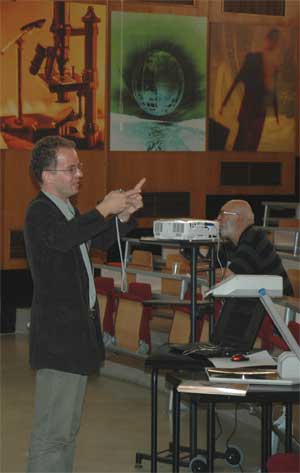LOESSFEST'09 | Aug. 31st – Sept. 3rd, 2009 |Novi Sad-Serbia
The Evolution of the Loess Mollusk Fauna of the Carpathian Basin
Sümegi, P.1,2, Gulyás, S.2
1University of Szeged, Department of Geology and Paleontology, H-6722 Szeged Egyetem u.2-6;
2Archaeological Institute of Hungarian Academy of Sciences, H-1014 Budapest Úri u. 49
The Carpathian Basin with its area of 320,000 km2 is nestled in the heart of Europe. The modern climate of the basin is the outcome of the interplay of four major overlapping climatic influences (Oceanic, Continental, Submediterranean, Montane) with spatially and temporally varying extent and strength, overprinted on the special so-called basin effect attributable to the unique location and geomorphological endowments of the area. According to the available Quaternary malacological data, these climatic influences have been continuously present in the area since the second half of the Middle Pleistocene; i.e. for the past 300-350 ky both in glacial and interconnecting interglacials.
 Based on our investigations,
the so-called basin effect creating the present mosaic-like patterning of the climate
and natural endowments in the area must have emerged during the second
half of the Middle Pleistocene. By this time the surrounding mountains must
have reached a critical height as a result of continuous uplift from inverse tectonism
initiating during the terminal Pliocene, which allowed for the appearance of
the so-called basin effect. The southern areas of the basin are of special importance
thanks to the location of an outstanding faunal corridor here, which hosted
numerous faunal migrations between the Iron Gate, the Balkan Peninsula and
the Carpathian Basin during the entire Quaternary. Another peculiarity of the
area is that the evolutionary path which the mollusk faunas followed here are at
odds with the one observed and documented in Central Europe and the northern
and western parts of the basin. Consequently, the individual mollusk stages
or zones postulated by Ložek for Central Europe can not be fully adopted in
the stratigraphy and paleoecology of Quaternary deposits of the area. This special
character of the faunal evolution must be attributed to the firm presence of the
Submediterranean Climatic Influence in the area, which triggered different mesoclimatic
conditions overprinting the so-called basin effect and creating a special
trajectory of environmental evolution both during the warmer and cooler periods.
This is seen in the overwhelming dominance of dry, loess and sandy grassland
species besides the numerous continental, montane and forest habitat loving
Carpathian-Central European elements in the Pleistocene mollusk fauna of
the region.
Based on our investigations,
the so-called basin effect creating the present mosaic-like patterning of the climate
and natural endowments in the area must have emerged during the second
half of the Middle Pleistocene. By this time the surrounding mountains must
have reached a critical height as a result of continuous uplift from inverse tectonism
initiating during the terminal Pliocene, which allowed for the appearance of
the so-called basin effect. The southern areas of the basin are of special importance
thanks to the location of an outstanding faunal corridor here, which hosted
numerous faunal migrations between the Iron Gate, the Balkan Peninsula and
the Carpathian Basin during the entire Quaternary. Another peculiarity of the
area is that the evolutionary path which the mollusk faunas followed here are at
odds with the one observed and documented in Central Europe and the northern
and western parts of the basin. Consequently, the individual mollusk stages
or zones postulated by Ložek for Central Europe can not be fully adopted in
the stratigraphy and paleoecology of Quaternary deposits of the area. This special
character of the faunal evolution must be attributed to the firm presence of the
Submediterranean Climatic Influence in the area, which triggered different mesoclimatic
conditions overprinting the so-called basin effect and creating a special
trajectory of environmental evolution both during the warmer and cooler periods.
This is seen in the overwhelming dominance of dry, loess and sandy grassland
species besides the numerous continental, montane and forest habitat loving
Carpathian-Central European elements in the Pleistocene mollusk fauna of
the region.



